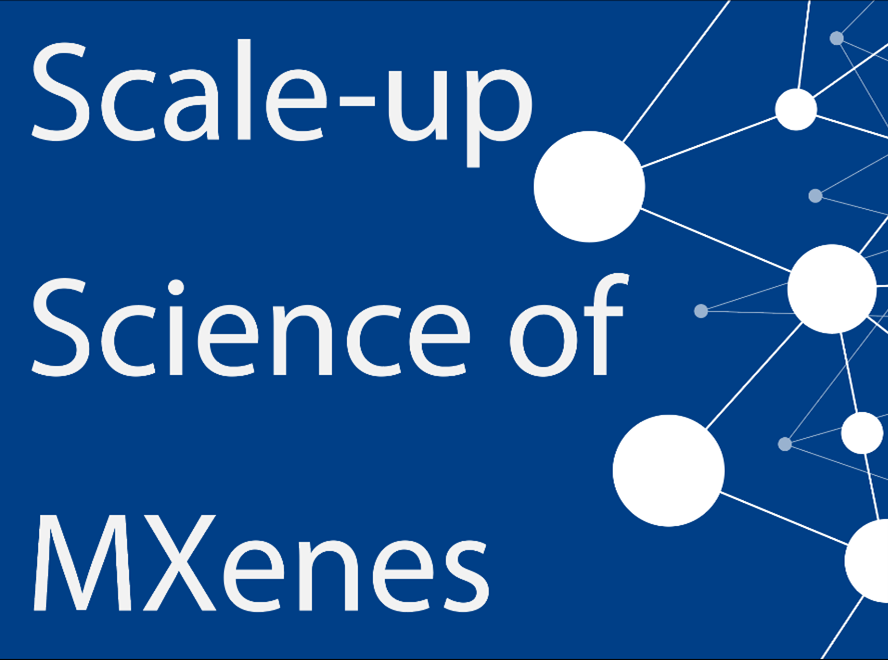Discovered in 2011, the MXene family is comprised of 2D transition metal carbides, carbonitrides, and nitrides with a general formula of Mn+1Xn, where M represents transition metals (e.g., Sc, Ti, Zr, Hf, V, Nb, Ta, Cr, Mo) and X is carbon and/or nitrogen. MXenes are receiving significant attention as the next-generation electromagnetic (EM) shielding materials, which can mitigate malfunction and leakage of confidential information from electronic devices. Using MXenes can address some of the drawbacks of conventional EM shielding materials, which are made of metal such as aluminum, copper, and nickel. However, these metal shrouds are heavy, bulky, easily corrodible, and not mechanically flexible - all of which limits the use for modern microelectronic devices.
Currently, MXenes are synthesized by wet-chemical etching in highly concentrated hydrofluoric acid (HF) or HF-containing or HF-forming etchants. The process adds surface functionalities such as -O, -F, or -OH, represented by Tx in this formula as Mn+1XnTx. Etching is required because of strong chemical bonding between the T and M atoms, which make mechanical exfoliation challenging and hardly possible. To date, more than 20 members of the MXene family have been synthesized, and dozens more are predicted, making it one of the fastest growing 2D material families. Reported efforts of scaling up the synthesis of MXenes, however, are few. Still in the early stage of research, current processes suffer from both low yield (e.g. 10-20%) and quantities as well as inhomogeneity in size and morphology that leads to variability in EM shielding performance and prevents their practical utilization.
To address these challenges and explore the scale-up science of MXene, LLNL researchers have developed a scalable solution-phase synthesis method to generate MXene with over 70% production yield via top-down exfoliation approaches with non-aqueous solvents and salts. The novel method is a dramatic improvement compared to conventional approaches (10-20%). Furthermore, the shielding effectiveness (SE) of resulting materials are comparable to bulk metals and normalized SE by density and thickness is the order magnitude higher than that of conventional metals (e.g. Cu).
- Yields over 70% compared to 20% for current standards.
- Minimized use of hydrofluoric acid.
- Easily scalable synthesis.
- Allows for the production of lightweight, ultrathin, flexible and highly efficient MXene shrouds that shields systems from EM radiation
MXenes have been considered as materials for next-generation EM shielding applications.
MXenes also have potential use cases in batteries and supercapacitors, electrocatalysts, and electrodeposition substrates. In theory, they could be utilized to enhance the stability and performance of electrodes, electrolytes and separators due to their hydrophilic surfaces and high metallic conductivities.
MXenes show promising performance in various applications such as water desalination, catalysis, electronics, transparent and conducting films, sensors and biomedicine.
Current stage of technology development: TRL 3
LLNL has filed for patent protection on this invention.


